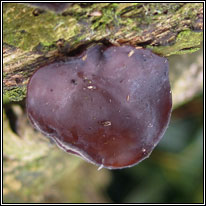
1H NMR metabolomics assessed the effect of XFZYD on high-fat diet-induced hyperlipidemia rats. Xue-Fu-Zhu-Yu Decoction (XFZYD), as a well-known TCM formula, was found to stimulate circulation, thus mitigating stasis. In contrast, Atorvastatin affected hyperlipidemia via lipid and protein metabolism.
Auricularia auricula judae Pc#
GP treatment exerted an antihyperlipidemic effect by increasing PC and decreasing trimethylamine N-oxide. Hyperlipidemia was closely associated with lipid, carbohydrate, and amino acid metabolism. Acetone, glutamine, acetoacetate, and trimethylamine N-oxide were increased dramatically, whereas isoleucine, valine, alanine, lysine, 3-hydroxybutyrate, citrate, fumarate, lactate, glycogen, and PC decreased remarkably in the plasma and liver in hyperlipidemic rats. 1H NMR metabolomics was used to study plasma and liver profiles following oral administration of Gynostemma pentaphyllum (GP). Metabolomics may also be used to study alternative lipid-lowering therapeutics such as TCM. As such, metabolomics provides an essential and indispensable tool to effectively mine the pleiotropic changes associated with use of antilipemic drugs. Cordycepin had little lipid-regulating activity on plasma but more beneficial effect hepatically, suggesting a protective effect on fatty liver. Increased glutamine and decreased glucose and glycogen were additionally found in both plasma and liver. Similar results were obtained in a 1H NMR metabolomic study on hyperlipidemic Syrian golden hamsters treated with cordycepin. WS070117 regulated lipid metabolism and displayed more beneficial effects on plasma and liver indices than Simvastatin. Increased TG, TC, lactate, alanine, and decreased choline-containing metabolites (phosphocholine, PC and glycerophosphocholine) and betaine were observed.

1H NMR plasma and liver metabolomics were employed to explore the therapeutic effects of 2′,3′,5′-tria-cetyl-N6-(3-hydroxylaniline) adenosine (WS070117) in hyperlipidemic Syrian golden hamsters. In addition, phenylalanine, tryptophan, glutamic acid, threonine, methionine, and other amino acids were also changed.
Auricularia auricula judae free#
Using GC-TOF/MS, increased serum free fatty acids and TC and significantly decreased hyaluronic acid, creatinine, and succinic acid were observed in hyperlipidemic hamsters. Serum metabolomics in the hyperlipidemia hamster model demonstrated that lipid metabolism could be returned to normal and gut microbiota reestablished with metronidazole treatment. Atorvastatin competitively inhibited HMG-CoA reductase in the liver to decrease cholesterol and increase LDL receptor synthesis thus decreasing LDL-C, an effect consistent with its preventive and therapeutic role in atherosclerosis. Protein metabolism was also impacted, thus returning glutamine and glucogenic amino acids to nascent levels. Atorvastatin restored the levels of ketone bodies, acetoacetate, acetone, and 3-hydroxybutyrate to normal. In another study, 1H NMR-based metabolomics were used to monitor plasma and liver profiles following Atorvastatin treatment. In contrast, estrone, cortisone, proline, cystine, 3-ureidopropionic acid, and histidine were associated with Atorvastatin-induced liver toxicity. In response to treatment, metabolite profiling suggested restoration of “healthy” metabolism. Metabolic profiling of plasma and tissue (liver, aorta, cardiac muscle, and brain) following oral administration of these drugs was analyzed by MS coupled with multivariate data analysis in rabbit and rat models.

Metabolomics has been utilized to explore the therapeutic effect of antilipemic drugs such as Atorvastatin and Simvastatin. Apart from chemical therapeutics and TCM, food itself can exert a hypolipemic effect, i.e., fish oil, Pu-erh tea, Auricularia auricula, and Hawthorn. These antilipemic TCMs can be grouped into three categories: (1) herbs promoting excretions, generally by reducing food retention, enhancing purgative effect, and promoting diuresis and choleresis (2) herbs acting on the cardiovascular system, generally by improved blood circulation (3) herbs that have tonic effect. Interestingly, more than 50 traditional Chinese medicines (TCM) have also been used to treat hyperlipidemia. Rui-Chao Lin, in Advances in Clinical Chemistry, 2014 6.1.2 Antilipemic agent researchĬurrently, statins, fibrates, nicotinic acid, and cholesterol absorption inhibitors remain the main therapeutics to reduce circulating lipids.


 0 kommentar(er)
0 kommentar(er)
